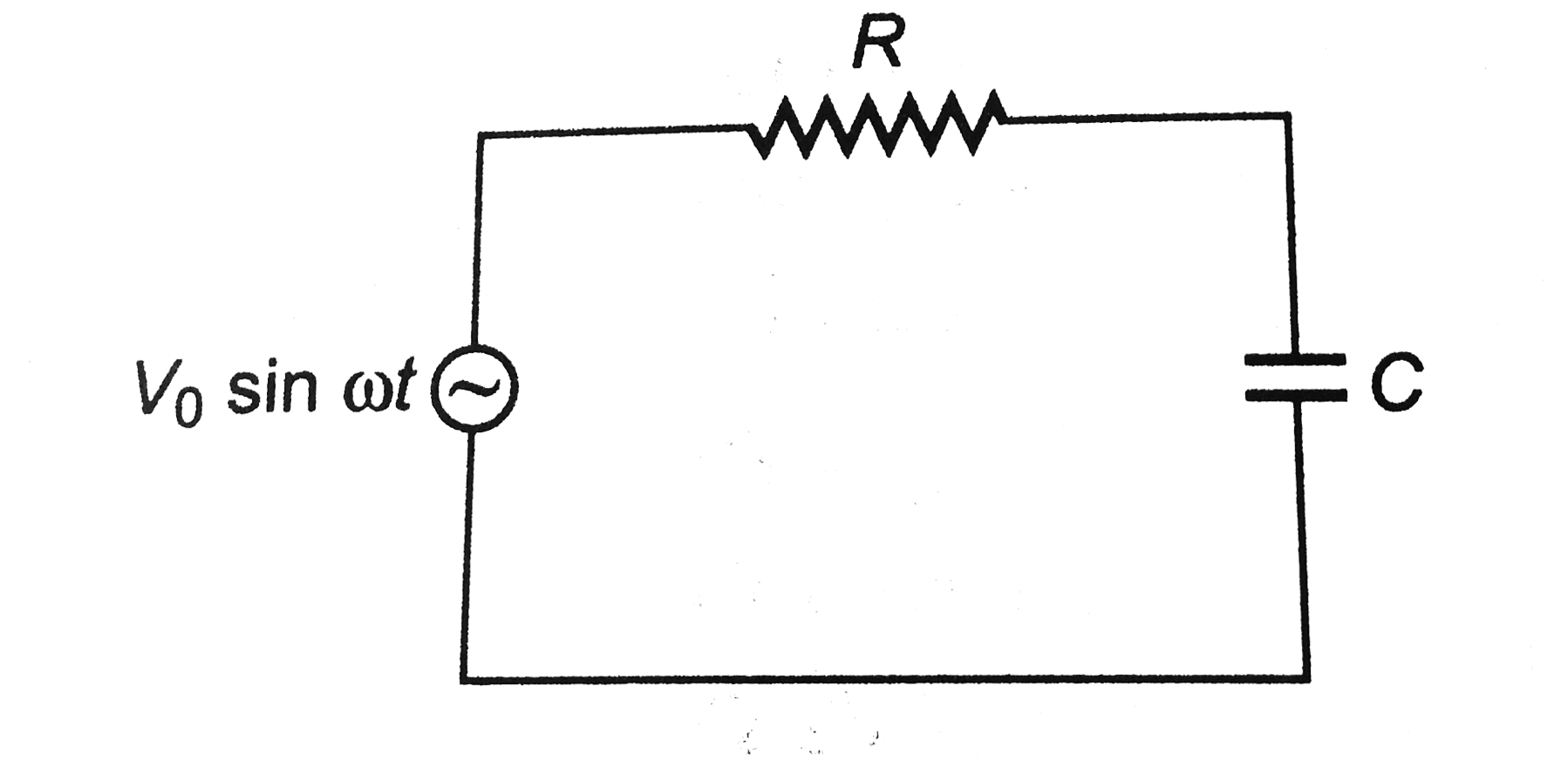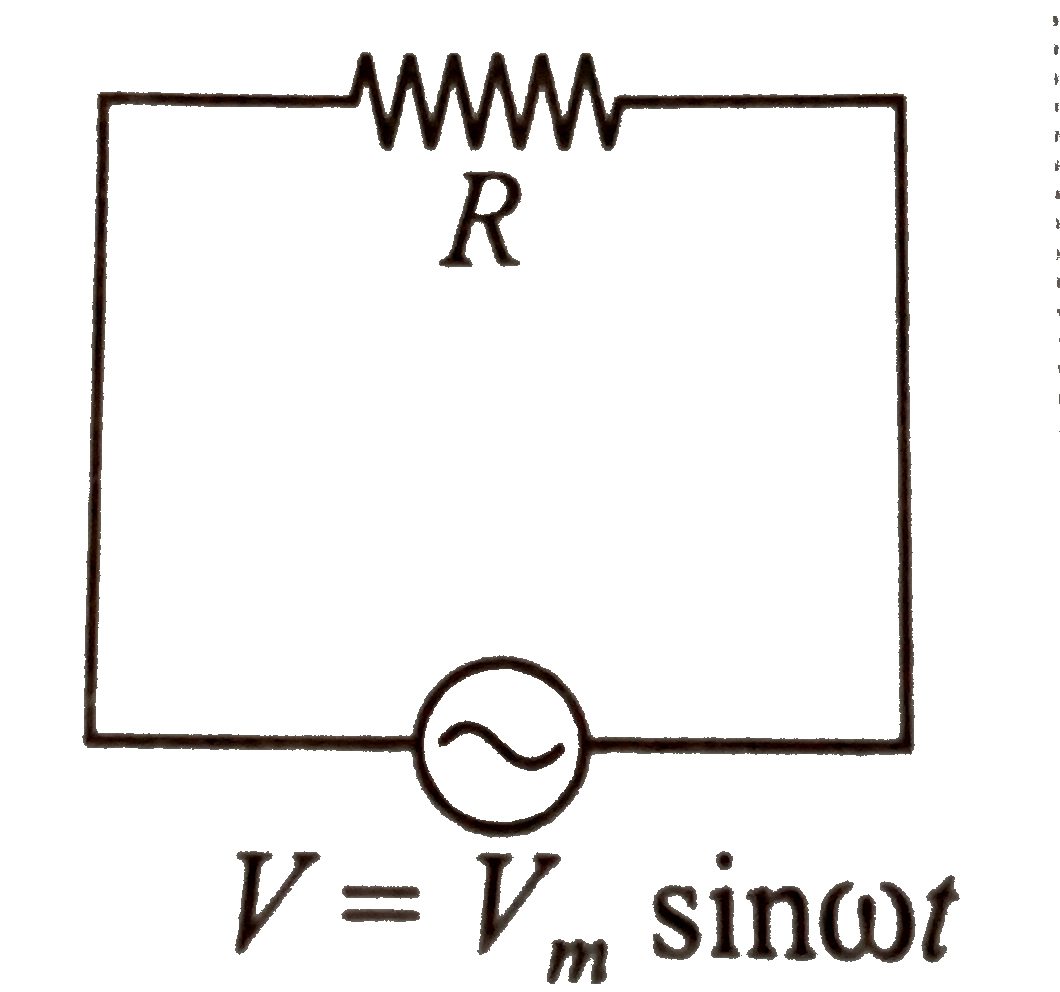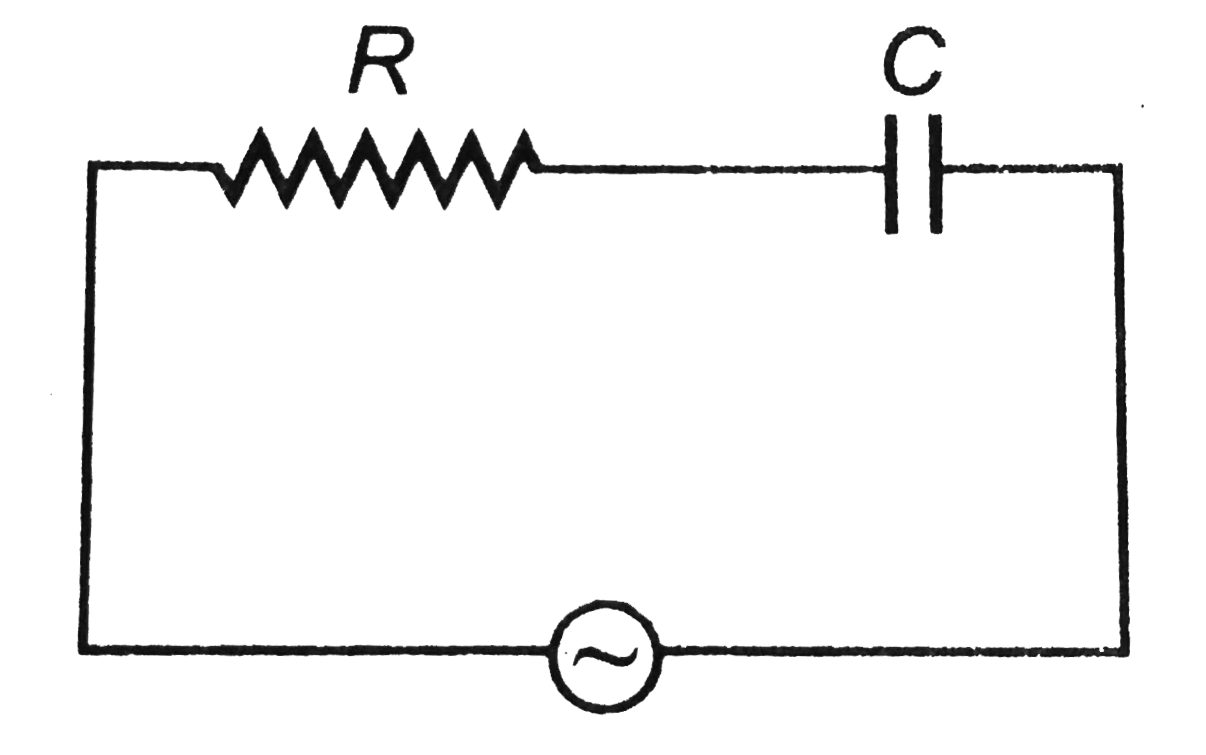An AC voltage source V=V0siωtis connected across resistance R and capacitance C as shown in figureure. It is given that R=1ωC. The peak current is I0. If the angular frequency of the voltage source is changed to ω√3, then the new peak current in the circuit is
 .
.
I02
I0√2
I0√3
I03
The correct Answer is:B
Step by step video, text & image solution for An AC voltage source V=V_0siomegatis connected across resistance R and capacitance C as shown in figureure. It is given that R=1/omegaC. The peak current is I_0. If the angular frequency of the voltage source is changed to omega/sqrt3, then the new peak current in the circuit is . by Physics experts to help you in doubts & scoring excellent marks in Class 12 exams.
Topper's Solved these Questions
- BOOK - RESONANCECHAPTER - ALTERNATING CURRENTEXERCISE - EXERCISE-61videos
ALTERNATING CURRENT
- BOOK - RESONANCECHAPTER - ALTERNATING CURRENTEXERCISE - EXERCISE-71videos
ALTERNATING CURRENT
- BOOK - RESONANCECHAPTER - ALTERNATING CURRENTEXERCISE - EXERCISE-41videos
ALTERNATING CURRENT
- BOOK - RESONANCECHAPTER - ATOMIC PHYSICSEXERCISE - Advanved level problems17videos
ATOMIC PHYSICS
Similar Questions
An AV voltage source is applied across an R-C circuit. Angular frequency of the source is ω, resistance is R and capacitance is C. The current registered is I. If now the frequency of source is changed to ω2 (but maintaining the same voltage), the current in the circuit is found to be two third. calculate the ratio of reactance to resistance at the original frequency ω .
View SolutionAn a.c. source of angular frequency ω is fed across a resistor R and a capacitor C in series. The current registered is I. If now the frequency of the source is changed to ω/3 (but maintaining the same voltage), the current in the circuit is found to be halved. calculate the ratio of reactance to resistance at the original frequency ω.
View Solution
Knowledge Check
- Question 1 - Select One
An ac source of voltage V=Vmsinωt is connected across the resistance R as shown in figure. The phase relation between current and voltage for this circuit is
 Aboth are in phaseBboth are out of phase by 90∘Cboth are out of phase by 120∘Dboth are out of phase by 180∘
Aboth are in phaseBboth are out of phase by 90∘Cboth are out of phase by 120∘Dboth are out of phase by 180∘ - Question 2 - Select One
An AC source of angular frequency ω is fed across a resistor R and a capacitor C in series. The current registered is I. If now the frequency of source is changed to ω/3 (but maintaining the same voltage), the current in the circuit is found to be halved. The ratio of reactance to resistance at the original frequency ω will be.
A√35B√53C3/5D5/3 - Question 3 - Select One
A 50HzAC source of 20V is connected across R and C as shown in figureure.

The voltage across R is 12V. The voltage across C isA8VB16VC10VDnot possible to determine unless value of R and C are given
An a.c. source of angular frequency ω is fed across a resistor R and a capacitor C in series. The current registered is I. If you the frequency of source is changed to ω/3, maintaining the same voltage, current in the circuits is found to be halved. Caculate the ratio of reactance to resistance at the original frequency ω.
View SolutionAn ac source of angular frequency ω is fed across a resistor R and a capacitor C in series. The current registered is I. If now the freqency of source is chaged to (ω)/3 (but maintainging the same voltage), the current in the circuit is found to be halved. Calculate the ration of hte reactance to resistance at the original frequency ω.
View SolutionAC voltage source (V,ω) is applied across a parallel LC circuit as shown in figure. Find the impedance of the circuit and phase of current.
 View Solution
View SolutionConsider in L−C−R circuit as shown in figureure with an AC source of peak value V0 and angular frequency ω. Then the peak value of current through the AC
 .View Solution
.View SolutionAn ac source of angular frequency o is fed across a resistor R and a capacitor C in series. The current registered is l. If now the frequency of source is changed to c/3 (but maintaining the same voltage), the current in the circuit is found to be halved. The ratio of reactance to resistance at the original frequency o will be
View Solution

